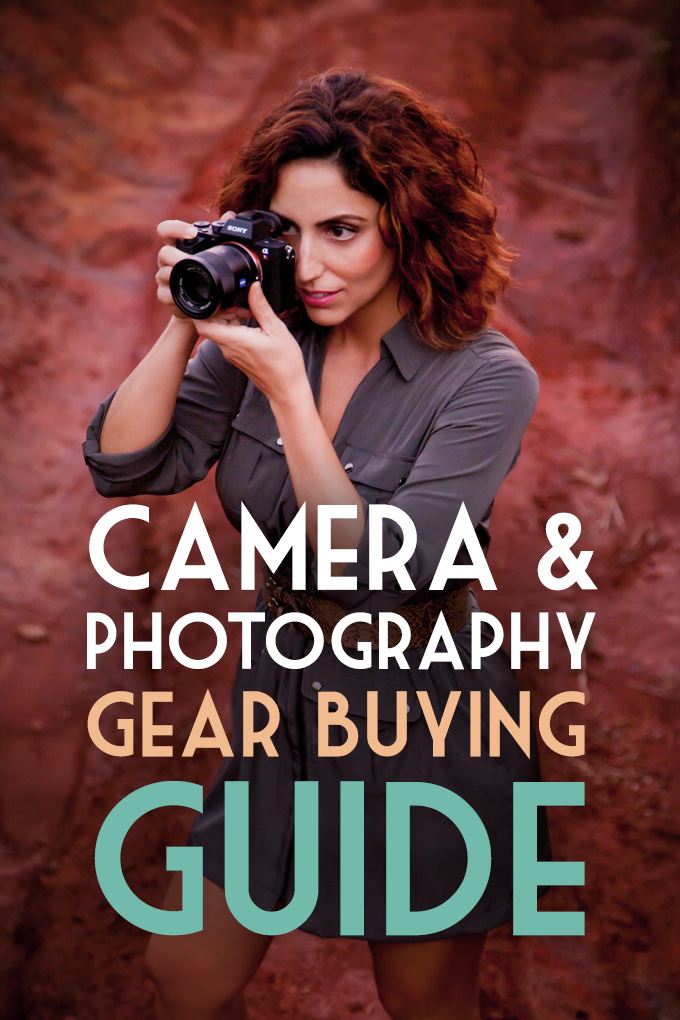
Whether you’re shopping for gifts or perfecting your blogging game, figuring out which camera to buy can be confusing. That’s why I’m breaking down cameras and gear by price, purpose (still photography or video), and skill level (beginning, intermediate, or pro). Have more questions about the gear I use? Ask me in the comments section.
DSLR Cameras
Canon Rebel T5i
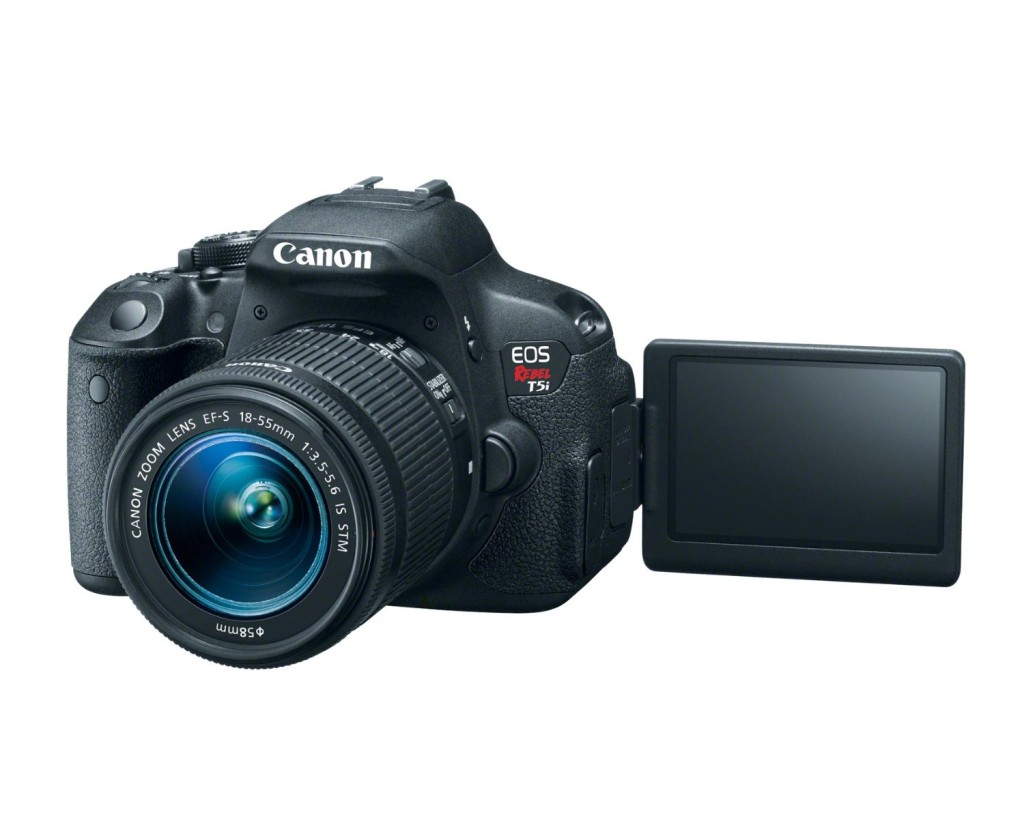
Level: Beginner
Price: Amazon – $469 or B&H Photo – $649
Pros: Great for new DSLR users, economic price, swivel touchscreen LCD, Many lenses available, takes good video
Cons: Not the newest model, not full frame, no 60 fps above 720p, not the best autofocus performance in video mode, aliasing and rolling shutter issues in video mode.
I’ve always used Canon simply because it’s what I bought first. I have no qualms with Nikon, or most other brands, but since Canon has met my needs within my budget, I’ve stuck with them. After all, a company’s different models will share design elements on some level. Plus when you begin to amass a collection of lenses, you tend to not want to get out of that ecosystem.
Canon’s Rebel series is supposed to be for beginners. They have several models available below the T5i, but for my purposes, this is the lowest model I would buy simply because of its affordability balanced with its photo/video capability.
A little about the T(x)i model history. This represents Canon’s highest model that still falls under the Rebel family. The T3i, T4i, and T5i had very small changes made, making it not worth spending the extra to upgrade. I’ve heard that the newer T6i and T6s make a more significant upgrade, but have not tested them personally. If you have the extra money, the T6i would have updated specs and a newer processor, autofocus system, and higher megapixel count. The T6s is like the T6i, but it gets you a step toward the higher end consumer models by including an LCD display on the top. Since Canon has kept the T5i around even after introducing its successor, you can now get it at a lower price than the T6 models.
Since these are all Rebel cameras, they are considered beginner or enthusiast cameras. Certainly a business with more cash on hand could go up to a higher model, but the T5i has been a good starter camera for our small startup photo/video company. Being light on the price tags brings some frustrations, but I’m sure you’ve heard “The best camera is the one you have on you.”
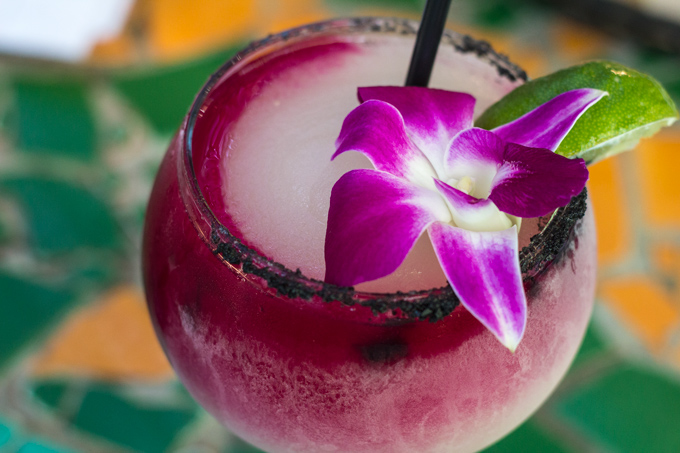
First let’s talk about one of the benefits of the T5i. A number of Canon’s DSLR models are built with a swivel LCD screen. This is a wonderful tool. It has far more uses than simply flipping it out to preview your selfies. If you’re in a crowd and need to raise the camera above, you can tilt the screen downward to use live view mode while holding the camera above your head. If you’re shooting video, you may appreciate not having to contort your body to see what’s on the screen. Additionally, the LCD is a touch screen which you can use to navigate menus, tap to focus on a subject, or even tap to activate the shutter.
The modes available allow for the newest of initiates to the DSLR world to simply put the dial on Auto. Don’t be shamed by those who say true photographers don’t use Auto. Sometimes you don’t have the time to adjust settings on the fly. And while you’re learning how to use ISO, aperture, and shutter speed viewing what settings the camera chose will help you get a sense of here to start. Then you can make adjustments.
The camera is a crop sensor camera, which means the sensor is 5/8 the size of a full frame sensor. This is ill be fine for most, especially since most full frame cameras are out of the budget of the average Joe. The downside of a smaller sensor is that less light can reach it. Since photography is literally capturing light, you won’t get as good low-light performance as a full frame. But this sensor is far bigger than the one in your cell phone, so it will perform well. It will also work with more of Canon’s lenses, including both the EF series and the EF-S series, the latter of which are less expensive. Another downside is that your camera will effectively be more zoomed in than a full frame camera. Taking an identical shot with a prime 50mm lens on a T5i and a 6D you will notice the 6D will capture more in the picture, while the T5i will look like you zoomed in or used an 80mm lens. If you plan on using a prime lens (one that doesn’t zoom), this may mean you’ll have to stand further back from your subject.
The main reason to go with the T5i over the T5 would be for its video capabilities. It can record in 1080p HD for up to 30 frames per second. If you are willing to shoot in 720p, you can add slow motion effects by shooting in 60 frames per second. This is one area where Canon lags behind some other cameras. By now, we should be able to shoot 1080p in 60fps, but for most its not deal killer. Honestly, most people won’t notice the difference between 1080 and 720 unless you’re showing your videos on a large screen like at a movie theater.
DSLR video has been made abundantly available and the depth of field you can achieve on your camera will look great, but there are some areas that DSLR video still has trouble with. If you’re thinking of using it for professional video, you’ll need to be prepared to deal with aliasing, rolling shutter effects and MP4 compression. If you don’t know what any of those are, then it won’t bother you. The thing that will matter to some is that most DSLRs, including the T5i, use an autofocus system that makes the camera hunt for its subject while in video mode. This can be frustrating if you have moving subjects. Sometimes it’s better to just go into manual focus mode. If you want better autofocus, perhaps the Canon 70D is more up your alley. I’ve just purchased one to add to my usage of the T5i and will be reviewing it shortly.
All in all, the T5i is a great starter DSLR for those interested in taking the dive, but not ready to invest a ton of money, or those who want a fairly simple way to take great pictures. It’s not a professional camera, but it’s one of the better consumer models. If you’re used to using w point-and-shoot camera, your cell phone, or your iPad (please don’t), this camera will vastly improve your images, but it will be much harder to lug around. I highly recommend it to anyone who is looking for an inexpensive, but not cheap in quality camera.
Review by James Knowles
Lenses to use with Canon T5i
Prime/Macro: Canon EF 50mm 1.8, often called the “nifty fifty” is cheap and perfect for the beginner who wants beautiful bokeh, something lightweight, and a great portrait lens. Buy from B&H Photo or Amazon for around $110.
Zoom: Sigma 24-70mm was my go-to for years. I even shot a cover story for United Airlines Hemispheres magazine with this lens. With 2.8f, you can get nice bokeh and at 70mm you can get action farther away than with the “nifty fifty.” Buy from Amazon and B&H Photo for $799. The Canon equivalent goes for $1,799 on Amazon and B&H Photo.
Telephoto: Canon EF 75-300mm is great for shooting wildlife that you just can’t get too close too without either losing a limb or scaring the thing away. If you’re a novice, start with lower priced lenses like this one that goes for $234 from Amazon and B&H Photo.
Canon 7D Mark II
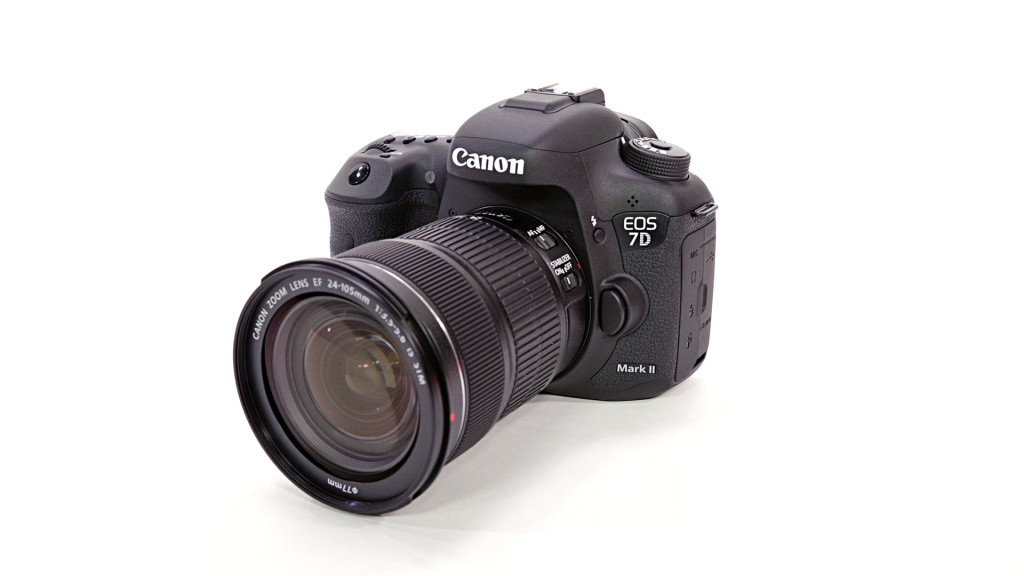
Level: Pro
Price: $1,399 from Amazon or B&H Photo
Pros: 65 auto-focus points; 20.2 megapixels (print up to 18″ x 12″ at 5472 x 3648 pixels); crisp, detailed images; shoots 1080p HD video at 60fps (great for action that you want to slow-mo in post-production)
Cons: No flip or swivel screen; menus can be confusing for beginners; weighs 2 lbs. without a lens so is quite hefty with a zoom lens.
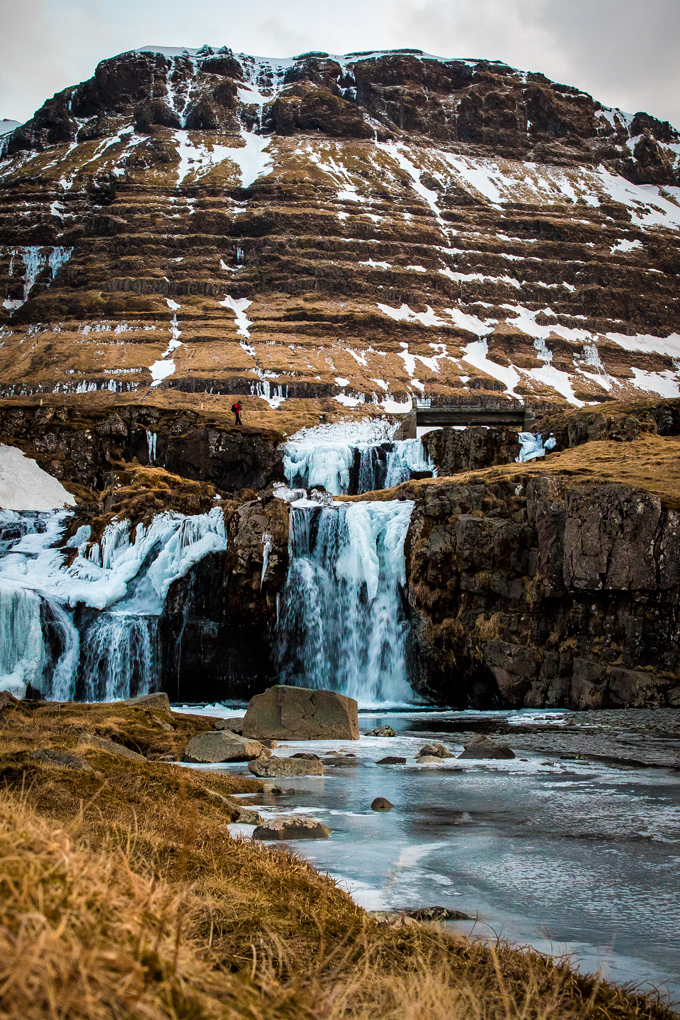
I shot my entire Iceland film with the Canon 7D Mark II. In fact, it was my first project with this pro camera. I used my Sigma 24-70mm lens and several people were surprised at the quality I was able to achieve. I had 9 days in Iceland, so I could take my time, which was good because this isn’t a point-and-shoot. I found the hundreds of menu settings a bit confusing and I certainly didn’t use all the features. The camera is also quite heavy, which was great for Iceland where the Artic winds can topple a car. This is, however, a great camera for shooting stills. If you you shoot more video than stills, spend another $500 and go with the Sony a7S.
Sony Alpha a6000
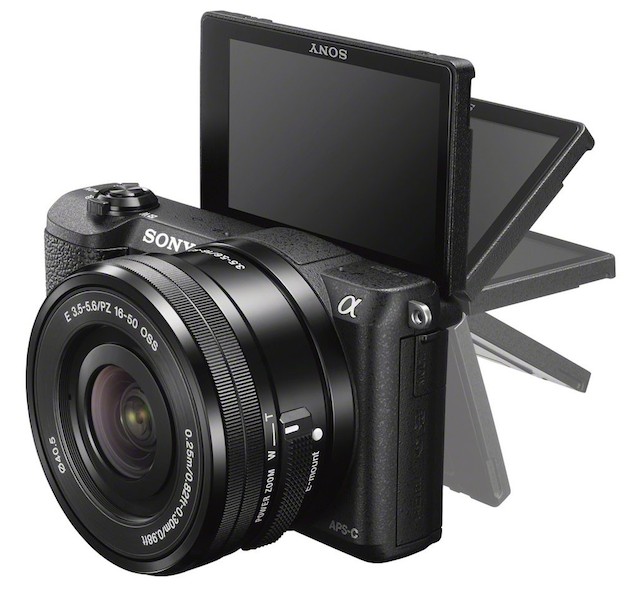
Level: Intermediate
Price: $398 from Amazon or B&H Photo
Pros: Lightweight, mirrorless SLR is compact and great for travel. Fast auto-focus and built-in WIFI.
Cons: Continuous autofocus is unreliable; High-ISO JPEGs can look overprocessed; Slow startup; No touch-screen; Wi-Fi can be difficult to use
I used this camera for a week before I upgraded to the Canon 7D Mark II. I wasn’t yet ready for the Sony A7s (priced at $2,500) but I wanted a lightweight, mirrorless camera for travel. A few years ago, the lens options were few and that ultimately led me to return the a6000.
Now that the price has dropped (that happens when newer models are released) and more lenses are available, I recommend this camera to someone who wants to make the jump from Canon to Sony or who just wants a lightweight camera. If you shoot for the web — your blog, Instagram, Facebook, etc. — this is a good gateway to understanding Sony systems.
Sony Alpha a7S
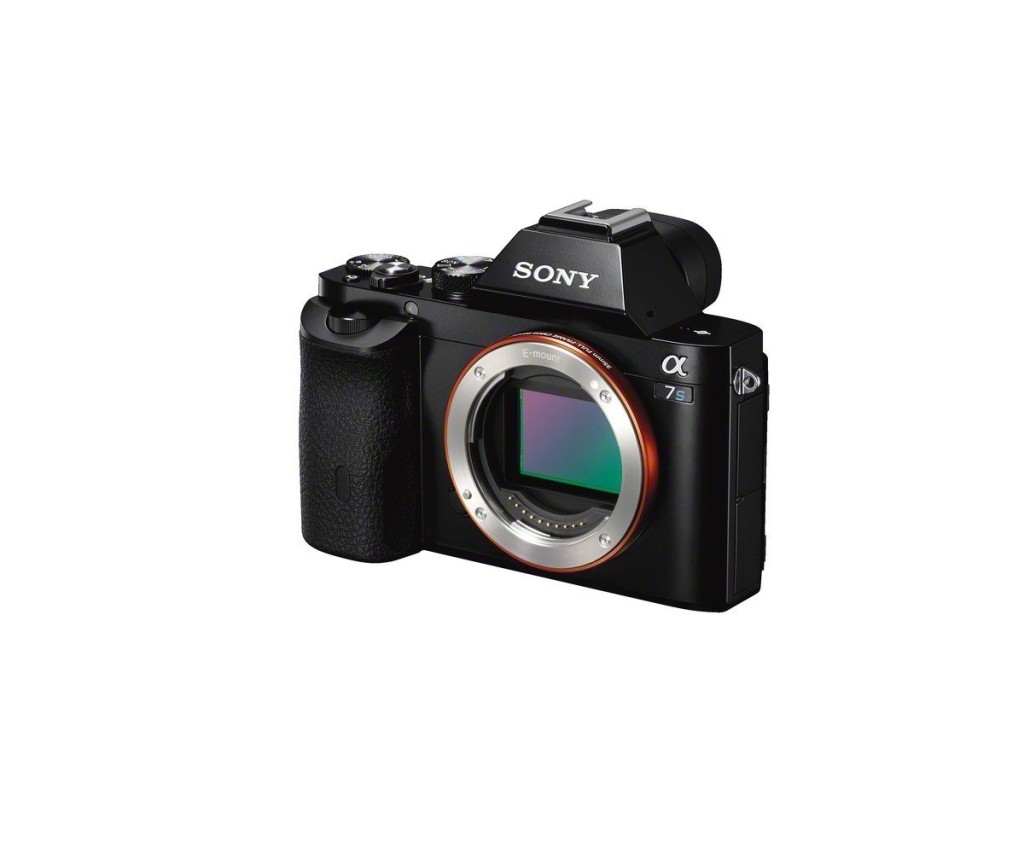
Level: Pro
Price: $2,198 from Amazon or B&H Photo
Pros: Famous for incredible low-light sensitivity (can see better than the human eye); lightweight; intuitive auto-focus; can shoot video through viewfinder; full-frame sensor; silent shooting mode.
Cons: Only 12 megapixels, so not ideal for shooting large-format stills (but fine shooting for the web); no touchscreen or swivel screen; oddly placed record button; short battery life.
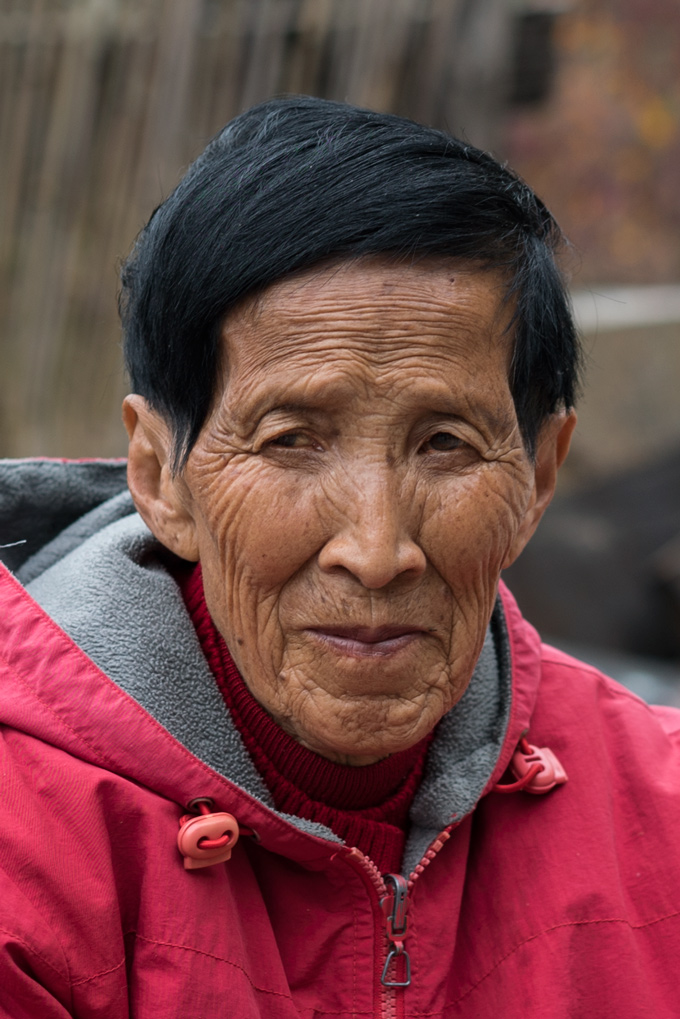
Taking a cue from pro filmmaker Brandon Li, I shot my entire film, “American Soil, Chamorro Soul” on the Sony a7S, a full-frame mirrorless SLR that has been the go-to of budget-conscious filmmakers for the last couple years. In geek speak, its expansive dynamic range, low noise, and extended sensitivity to ISO 409600 make it an excellent low-light camera. I tested it out against the Sony a7R II and the older, lower-priced a7s won in a low-light competition. However, a7R II shoots 42 megapixels as compared to 12.2 megapixels on the a7S, so if you’re primarily a stills photographer, go with the a7R II. The newest model in this series, a7S II, improves on the original with 4K video and 120fps at 1080p.
Lenses to use with Full Frame Sony Alpha Cameras
I splurged and bought Sony Zeiss lenses for my a7S. Some photogs and filmmakers prefer Canon lenses, which require an adapter, however that set-up means a loss of auto-focus in most cases. I don’t like shooting manually, so I prefer native lenses. I experimented with five lenses before I settled on these. Note that Alpha cameras use E Mount lenses, not A mount. Also, pay attention to whether the lens is for full-frame or crop sensor cameras.
Prime: Sony 55mm F1.8 Sonnar T* FE ZA Full Frame Prime Lens is simply beautiful. I shot my China portraits with the 55, wondering around the villages less conspicuously than if I had a bulkier camera and lens. The a7S with this 55mm lens is incredibly lightweight. Buy from Amazon or B&H Photo.
Zoom: Sony FE 24-240mm f/3.5-6.3 OSS Zoom Lens is great for long-range photography but also looks good at 24mm. I love being able to capture people and animals from a distance and not shoving my camera in anyone’s face or scaring off the wildlife! I don’t like having to change lenses, so I don’t even carry my smaller 24-70mm when I travel. Buy from Amazon or B&H Photo.
Wide Angle: I brought a fisheye lens to China to shoot Avatar Mountain and I was stoked with the results. The fisheye allowed me to capture incredible perspectives on the otherworldly mountains. I shot with a Rokinon 12mm F2.8 Ultra Wide Fisheye Lens, which is manual focus so it requires a bit of set-up. I was originally shopping for a Sony ultra wide angle lens (for tight spaces and landscapes), but now my fisheye goes with me every time I travel. Rokinon is also a lot less expensive than Sony, which is great for speciality lens like this fisheye. Buy from Amazon or B&H Photo.
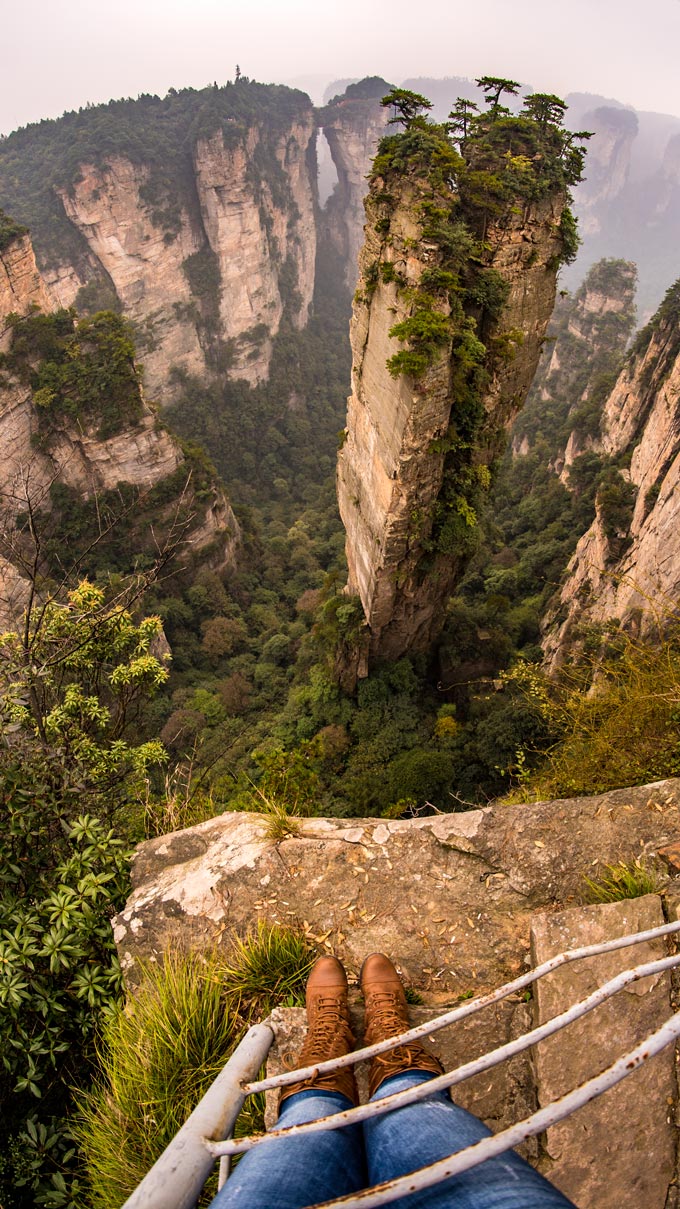
Photography Gear
Bags
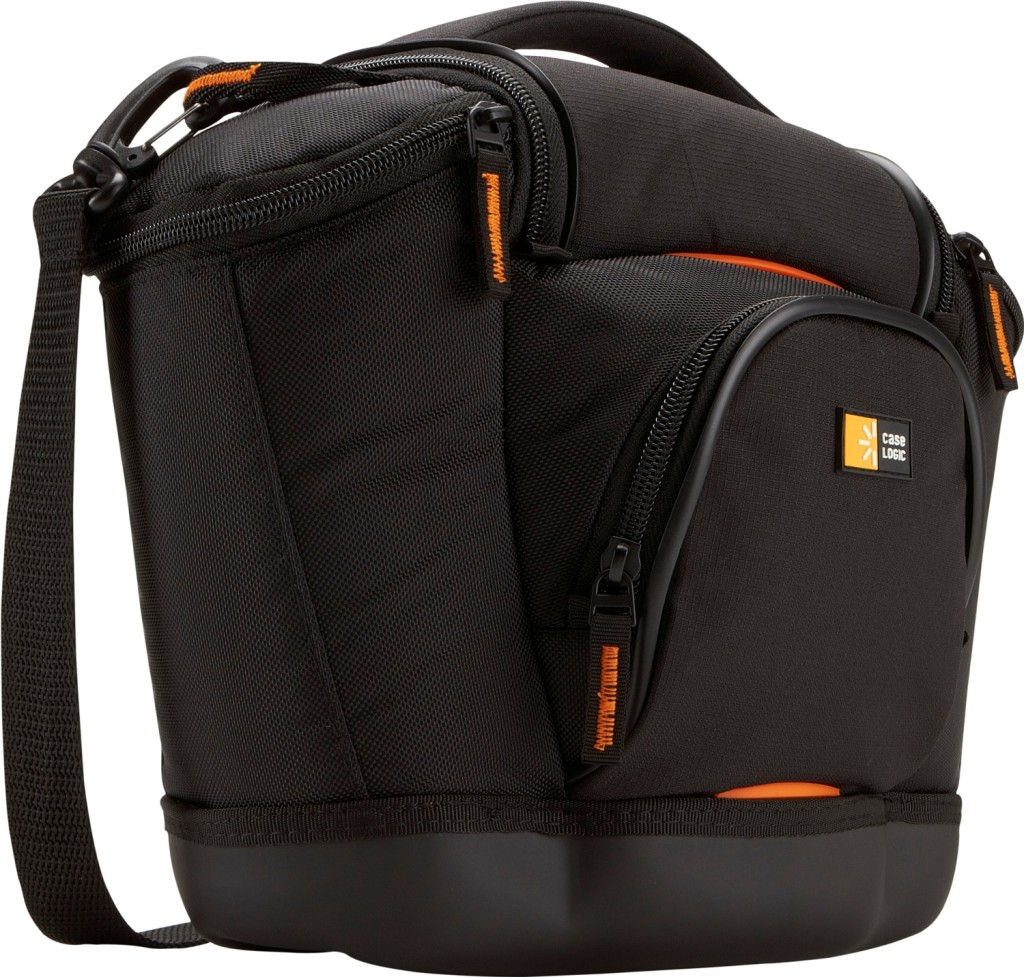
The Case Logic SLRC-202 Medium SLR Camera Bag has been my go-to since I picked it up in Dubai a few years ago. It’s not pretty, but it’s survived everything — most recently a monkey attack in Bali (I was carrying a banana in it). It has a suspension holster and hard rubber bottom to protect my camera in case of dropping it. There is space for two additional lenses (which is why I narrowed down my collection to three), filters, and SD cards. I can even fit my battery charger. The only downside is the standard strap which is not too comfortable, but the fact that I can quickly whip out and then store my camera makes up for that. Buy from Amazon or B&H Photo.
I also carry Fossil messenger bags with a camera cooler when I want a more stylish look.
Stabilization
At some point, you will need a tripod or monopod in your arsenal. Which ones you get depends on what you’ll use them for. Monopods are great for quick stabilization while you’re traveling, but obviously, you have to keep one hand on it, so not ideal if you need to be in the picture. Tripods vary in weight and swivel — video tripods are generally heavier, having smoother panning motion, and do not rotate vertically. Some tripods even have a built-in monopod! Browse tripods and monopods from Amazon and B&H Photo.
Pro videographers also use steadicams and rigs to achieve smooth video. Browse on Amazon and B&H Photo.
Filters
If you’ve ever wondered how to achieve silky smooth water shots (like on my Iceland waterfall pics), it’s not magic, it’s filters. Lens filters allow you to shoot long-exposures (1 to 30 seconds, usually) at higher ISOs. Without a filter, your photo would be completely overexposed (white). There are a few types of filters, but start with a set of neutral density graduated filters, which offer the most variety. Filters are sized specifically, so purchase a set for your favorite lens. For square filters, you’ll also need to buy a ring to attach to your lens. Search filters on Amazon and B&H Photo.
Read this excellent guide to shooting with filters on World Meets Girl.
Money-Saving Tips
- Buy used or refurbished equipment. B&H Photo is a very reliable source of used and refurbished equipment. I’ve saved thousands of dollars over the years buying equipment this way.
- B&H Photo gives up to 10% rewards on purchases, meaning you can earn store credits as you buy. Pace your purchases and you could save hundreds three months from now.
- Once you have some photos you’re proud of & want them blown up onto a canvas, you can find companies online that will do cheap, high quality photo prints such as Pixa Prints, these can also make great gifts for friends, showing your travels.
- Try renting or borrowing pro cameras and gear before you buy. Living in Guam, I’ve never had the option to do this, so I started with less expensive beginner gear and have upgraded every year or two as my skill level increased. I take good care of my equipment so I can sell it used on Craigslist or eBay.
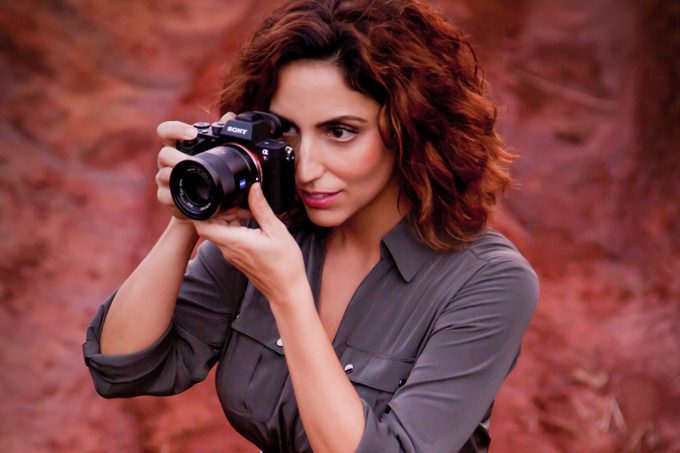
Comments 2
June 5, 2017 at 4:48 pm
There is a good range of cameras here, being a Canon fan I have checked the 2 Canon cameras before. The good thing about the 7D weighing 2lbs before adding a lens is that you get a great bicep workout throughout the day! I’ve heard a lot of good things about the mirrorless Sony Alpha, I just haven’t been able to get my head around a camera which doesn’t say Canon on it! I am a huge fish eye lens fan, the 7D with a fish eye would be my weapon of choice!
June 12, 2017 at 11:39 am
I started with Canon, ending with the 7D. It’s a great camera. I shot my Iceland video with it.